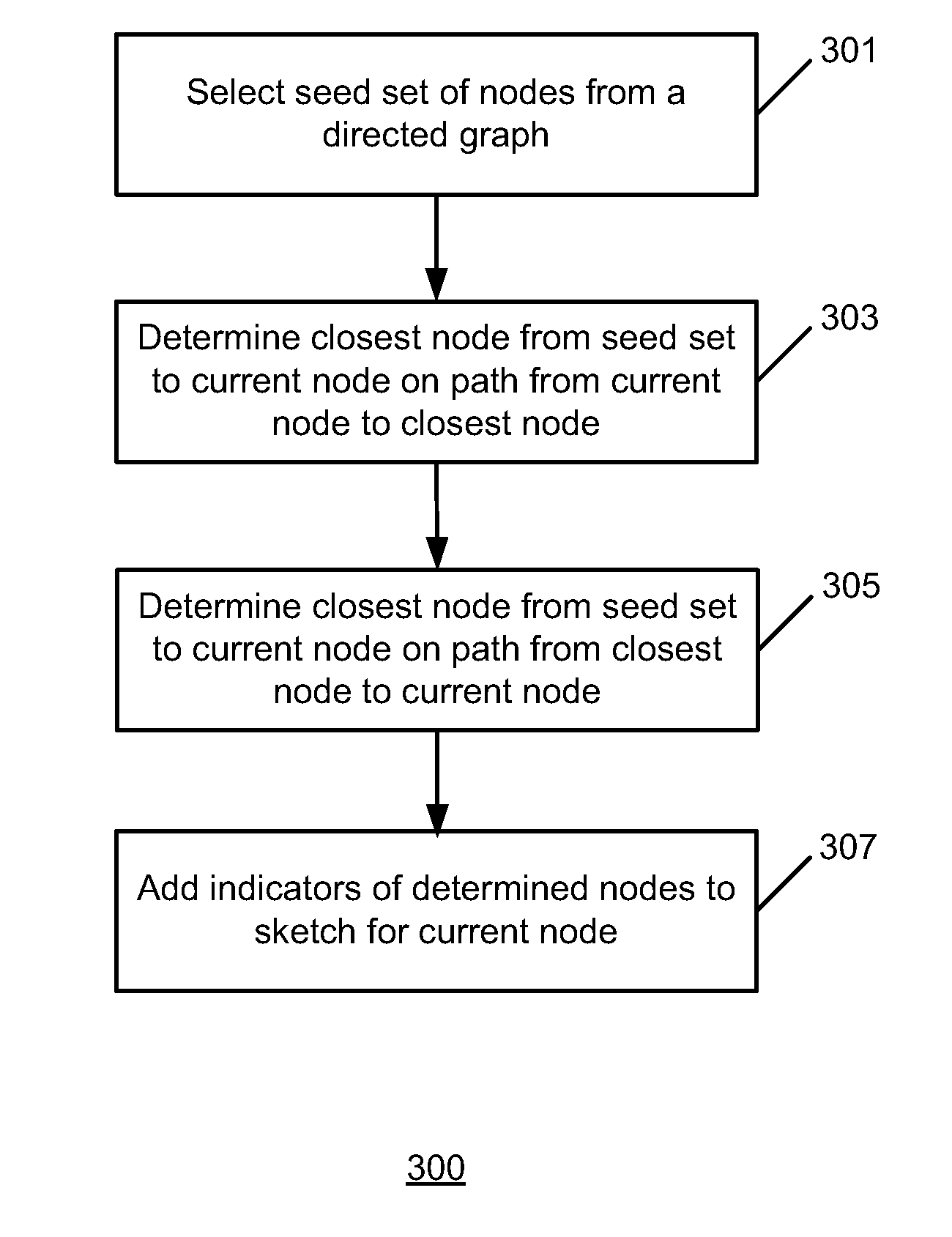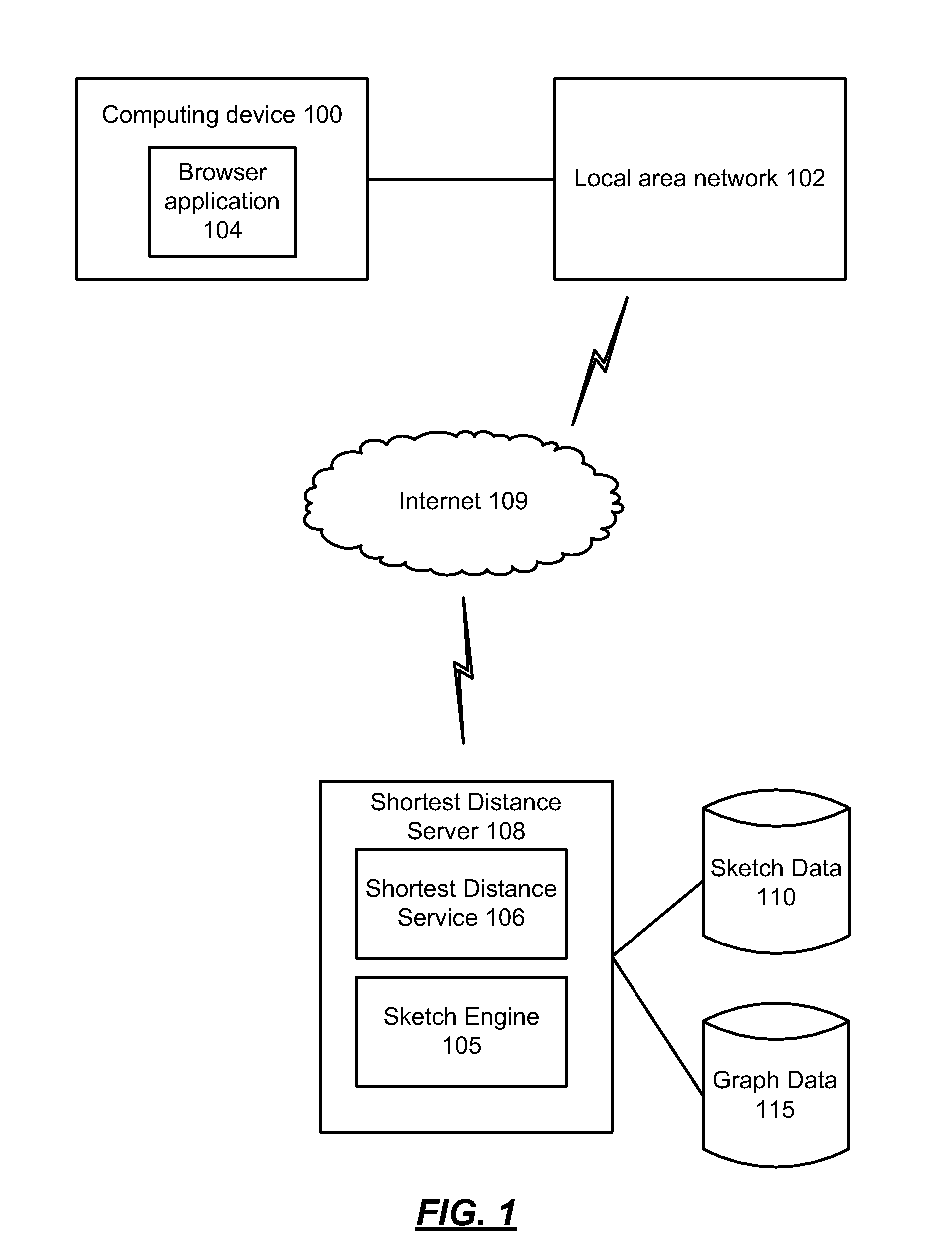Estimating shortest distances in graphs
- Summary
- Abstract
- Description
- Claims
- Application Information
AI Technical Summary
Benefits of technology
Problems solved by technology
Method used
Image
Examples
Embodiment Construction
FIG. 1 shows an example of a computing environment in which aspects and embodiments may be potentially exploited. A computing device 100 includes a network interface card (not specifically shown) facilitating communications over a communications medium. The computing device 100 may communicate with a local area network 102 via a physical connection, for example. Alternatively, the computing device 100 may communicate with the local area network 102 via a wireless wide area network or a wireless local area network media, or via other communications media. The computing device 100 may be a general purpose computing device such as the computing device 600 described with respect to FIG. 6, for example.
A user of the computing device 100, as a result of the supported network medium, is able to access network resources, typically through the use of a browser application 104 running on the computing device 100. The browser application 104 facilitates communication with a remote network over...
PUM
 Login to View More
Login to View More Abstract
Description
Claims
Application Information
 Login to View More
Login to View More - R&D
- Intellectual Property
- Life Sciences
- Materials
- Tech Scout
- Unparalleled Data Quality
- Higher Quality Content
- 60% Fewer Hallucinations
Browse by: Latest US Patents, China's latest patents, Technical Efficacy Thesaurus, Application Domain, Technology Topic, Popular Technical Reports.
© 2025 PatSnap. All rights reserved.Legal|Privacy policy|Modern Slavery Act Transparency Statement|Sitemap|About US| Contact US: help@patsnap.com



